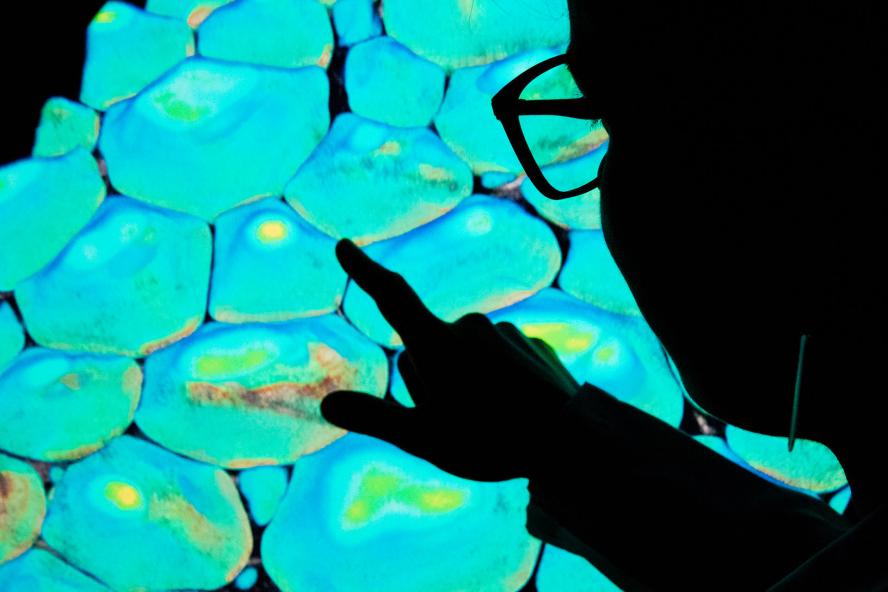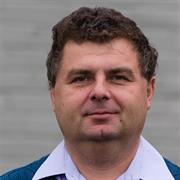Biophotonics
Spring: Dec 1 (domestic only), Oct 15 (international)
Summer: n/a
Part-time (Daytime)
Overview
The MS in Biophotonics at Tufts School of Engineering provides a broad curriculum that encompasses the design, engineering, and use of optical tools. Apply expertise in light and tissue interaction to improve diagnostics and therapeutics, advanced microscopes, nano-photonic technologies, and more.
The program is administered by the Department of Biomedical Engineering with additional support from the Department of Electrical and Computer Engineering and the Data Intensive Studies Center.
Program Highlights
Students in the MS in Biophotonics program experience an academic career distinguished by close faculty interactions that will propel them from graduate study to the future. Choose between a thesis track or a course-based track which includes a hands-on project or internship. Courses provide background on optical spectroscopy and imaging methods, photonic devices and sensors, as well as related analysis approaches, including machine learning based methods.
Master's degrees at Tufts School of Engineering require a minimum of 30 credits and the fulfillment of at least 10 courses at the 100-level or above with grades of S (satisfactory) or at least a B-.
Program Outcomes
The labor market for master’s-level biophotonics professionals is large and has seen strong growth over the last 5 years. The MS in Biophotonics provides a strong set of skills, preparing students to pursue industry careers or future graduate study that require an understanding of light and tissue interactions and focus on the development and use of new bio- or nano- photonic technologies to advance biomedical and biopharmaceutical products.
Application Requirements
- Application Fee
- Resume/CV
- Personal Statement
- Transcripts
- Three letters of recommendation
- Official TOEFL, IELTS, or Duolingo test scores (if applicable)
- Portfolio (optional)
- GRE General Test scores are not required
Tuition and Financial Aid
We recognize that attending graduate school involves a significant financial investment. Our team is here to answer your questions about tuition rates and scholarship opportunities.
Please contact us at gradadmissions@tufts.edu.
Career Outcomes

Average Salary: $100K+
Projected Job Growth (2022-2032): 5%
*Sources: Average salary and projected job growth statistics are from the U.S. Bureau of Labor Statistics Occupational Outlook Handbook. The listed salary is for the broad field of Biomedical Engineering. Biophotonics salaries may differ.
Faculty

Sergio Fantini

Sergio Fantini
Research/Areas of Interest: Biomedical optics, diffuse optical imaging, functional near-infrared spectroscopy, quantitative tissue oximetry.

Fiorenzo Omenetto

Fiorenzo Omenetto
Research/Areas of Interest: ultrafast nonlinear optics, nanophotonics, biopolymer multifunctional materials, material science, photonic crystals, photonic crystal fibers

Srivalleesha Mallidi

Srivalleesha Mallidi
Research/Areas of Interest: Ultrasound imaging, photoacoustic imaging, multi-modality imaging, image-guided surgery and therapeutics, nano drug delivery systems

Eric Miller

Eric Miller
Research/Areas of Interest: Statistical- and physics-based signal and image modeling and processing, tomographic image formation and object characterization, and inverse problems. Applications explored include human performance assessment, materials science, airport security, medical imaging, environmental monitoring and remediation, unexploded ordnance remediation, and automatic target detection and classification.

Aseema Mohanty

Aseema Mohanty
Research/Areas of Interest: nanophotonics, optical beam shaping, neuroengineering, chip-scale imaging and microscopy, quantum information systems Research Website: https://sites.tufts.edu/amohanty/

Karen Panetta

Karen Panetta
Research/Areas of Interest: Signal processing; image processing; simulation modeling

Abani Patra

Abani Patra
Research/Areas of Interest: computational sciences, data driven modeling

Cristian Staii

Cristian Staii
Research/Areas of Interest: Biological Physics, Condensed Matter Physics, Quantum Mechanics My research interests cover a broad array of topics in biological physics, condensed matter physics and quantum mechanics. In biological physics our group is performing both experimental and theoretical work to uncover fundamental physical principles that underlie the formation of functional neuronal networks among neurons in the brain. One of the primary challenges in science today is to figure out how as many as 100 billion neurons are produced, grow, and organize themselves into the truly wonderful information-processing machine which is the brain. We combine high-resolution imaging techniques such as atomic force, traction force and fluorescence microscopy to measure mechanical properties of neurons and to correlate these properties with internal components of the cell. Our group is also using mathematical modeling based on stochastic differential equations and the theory of dynamical systems to predict axonal growth and the formation of neuronal networks. The aim of this work is twofold. On the one hand we are using tools and concepts from experimental and theoretical physics to understand biological processes. On the other hand, active biological processes in neuronal cells exhibit a wealth of fascinating phenomena such as feedback control, pattern formation, collective behavior, and non equilibrium dynamics, and thus the insights learned from studying these biological systems broaden the intellectual range of physics. I am also interested in the foundations of quantum mechanics, particularly in decoherence phenomena and in applying the theory of stochastic processes to open quantum systems. My interests in condensed matter physics include quantum transport in nanoscale systems (carbon nanotubes, graphene, polymer composites, hybrid nanostructures), as well as scanning probe microscopy investigations of novel biomaterials.